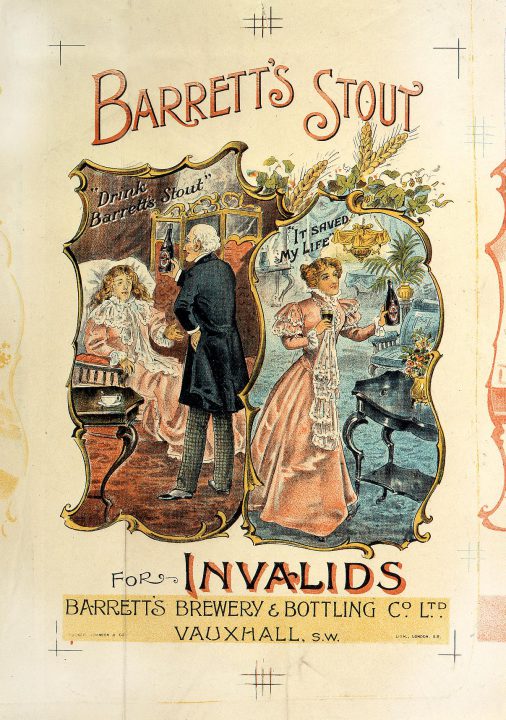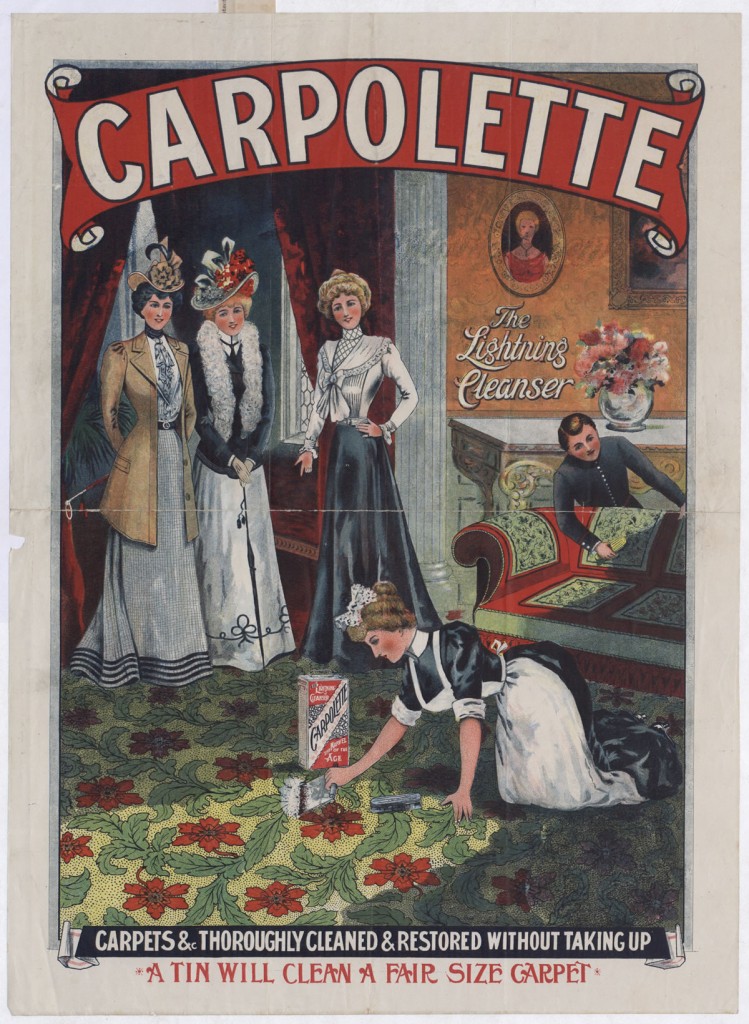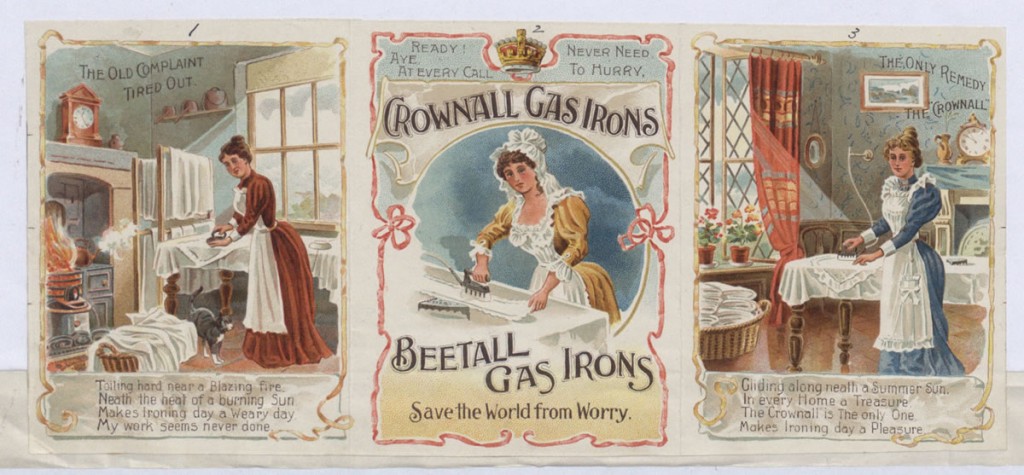Advertising in 19th Century Europe
how do adverts expand our understanding of european society?
Industrialisation was a sweeping force in 19th century Europe that changed the way people thought about the world. British companies had been perfecting their advertising through the century and finding innovative ways to get their customers attention (Hahn, 2014). As it did this, the advertising industry was simultaneously mirroring and shaping society. It mirrored, as people need to be able to parse the narrative of the adverts quickly, but also shaped, as adverts aimed to define an ideal that society should work towards - an ideal which includes the product they are selling. By looking at three advertisements which use and sell to women, we can understand women’s place in the home and how class affects it. Although upper class women were allowed some freedom and power in their house, which is stripped from women in the lower classes, no women are shown to have autonomy outside of it.

From the National Archives
The advertisement for Barrett’s Stout depicts the ideal that many women in this time period were after - autonomy. The woman depicted in this ad is plump and rosy, which were strong indicators of health at the time. The stout is being marketed as a medicinal drink for invalids, or sickly people, which informs us that health problems were common in this era, perhaps due to poor nutrition.
The viewer’s eyes are first drawn to the woman in the second panel as she has high contrast with cold-tones in the background. With her we also see the depth of her house and fashionable plants to further imply that this product is used by wealthy people. By placing these highly sought after features together, it links these ideas in the audience’s mind. However, one thing to note is that although she is depicted as autonomous, she is still confined to the household. Modern day adverts which alleviate afflictions, show being outside with friends and family as the common ideal, but here the fantasy is much more mundane. She is not doing any activity or shown to have any goals or motives, she simply is enjoying the product by itself. This subtly implies that a woman’s place is the house, regardless of health.

From the National Archives
The advertisement for Carpolette features three upper-class women that are watching over their servants using the carpet and upholstery cleaner. The story displayed in this advert is of a lady of the house having her friends visit her house and flaunting how well her carpets are being cleaned. This advert is aimed at the middle class as it glorifies the idea of having servants, highlighting the large class divide of this era. Additionally, the ladies are literally looking down on the servants, signifying that they are not equals. The advert also gives us insight into the high fashion of the period as the ladies are not only dressed for an occasion, but they all wear their clothes differently. They are all wearing long dresses, something around their necks and an extravagant hat which matches their outfit. They accessorise with something different, whether a feather boa, lace or a long overcoat. From this we can gather that fashion was becoming more diverse and personalised and that there wasn’t just one way to be seen as fashionable. Beauty standards however are not diverse. All of the ladies are white, slim, tall with blushed cheeks and short hair. This is unsurprising as beauty standards in any era are not normally diverse. We are also shown their wealth by the depth and interior design of the house with columns, paintings and imported Persian carpets.
The central figure is the woman who owns the house, which immediately attracts your attention and allows the audience to see themselves in the narrative. In contrast to the other adverts discussed, this is targeted at women instead of the man of the house. This means that we have an idea of what women valued in this time and that they had a role in running the household. It may be localised, but women had some power and this ad shows us that they were starting to be recognised as a group that could be marketed to. In fact, we can assume that it would be lucrative marketing to women as their husbands would want to please them and buy the products that they wanted.

From the National Archives
Crownall Gas Irons (1901) is a similar ad to the one for Barrett’s Stout as it also features the before and after format. The difference is similarly stark as she replaces her clock, windows, linen, etc. and loses the smoky fireplace. Interestingly, house plants are also featured in this ideal house, signifying that people in society yearned for the nature that was lost due to industrialisation. Additionally, many facets of interior design are on display such as the wallpaper, latticed windows and of course the gas powered iron. Consequently, we can imagine that there was a great deal of change occurring in interior design with industrialisation. It became easier and cheaper to mass manufacture items like wallpaper, which would make these products more accessible to the lower classes. The idea of gas powered irons also touches on modernity. No longer are maids required to create hot fires for ironing clothes, gas can be used on demand instead, which would be much more elegant. A large selling point of this advert is that it is primitive to use fire, and we now have new and cleaner technologies
The only character in this advert is a maid, so the class dynamics are limited. However, there is an emphasis on her attractiveness. The audience’s attention is grabbed by the central maid who is wearing a revealing outfit with a low cut cleavage. We can assume that the maid depicted is an ideal, which implies that there was preferential hiring of attractive maids. This is evidenced in the present by the trope of attractive maids in revealing outfits.
Reading the page, we see “The old complaint, tired out” which implies that it was popular belief that maids were lazy and that this product can help. From this, we can gather that a maid’s work was very tiring and overwhelming and that it was not likely more servants would be hired to lighten the load.
From the Carpolette advert it is evident that some women were allowed to travel, however no advert shows a woman outside. In this time period the woman’s world is the home. Additionally, class permeates all imagery with clear indications of class and their roles. No advert examined here displays a servant enjoying their job, in all they look determined and hard at work. The ideal displayed doesn’t include enjoyable working conditions which implies that all society cares for is the output of the worker.
Advertisements are an interesting window into 19th century Europe as they sell us on the ideals of society as a whole. And these ideas have foundations in class and gender roles that are key to understanding them. By focusing on ads that solely feature women, we gain the perspective that women are managed by their husbands or by people in the class above them. The idea of modernity is present in all of the ads as they feature new technologies or products enabled by industrialisation. Even though these adverts are hundreds of years old, they are still relevant today in demonstrating the union between industry and society under capitalism.